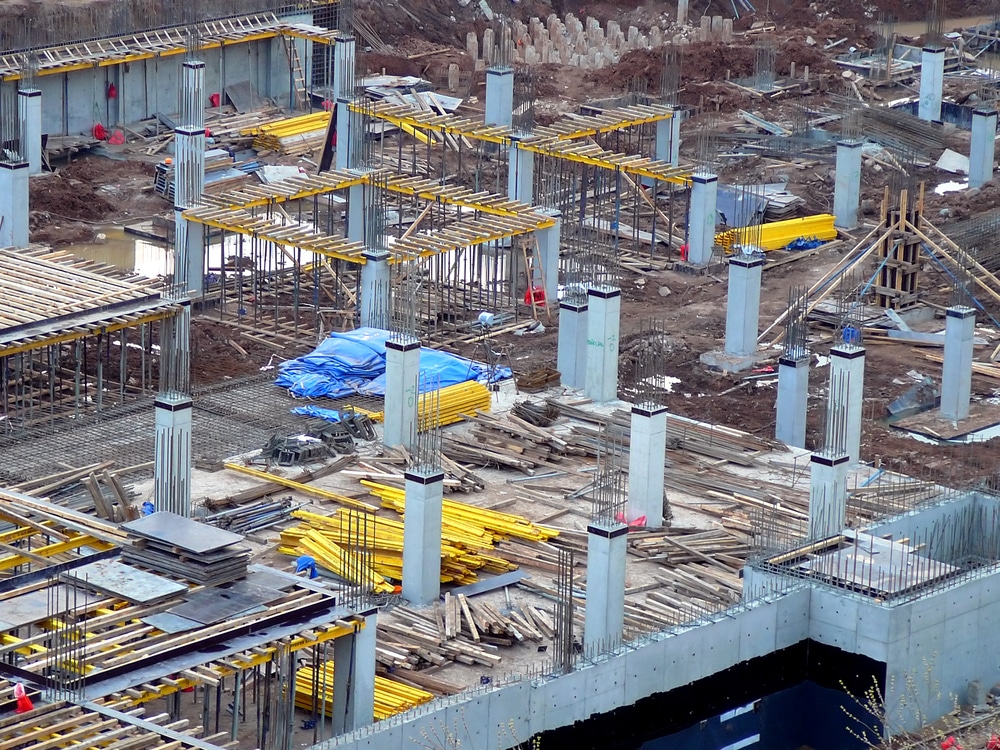In construction, technology has been gradually replacing outdated machines and systems. Nevertheless, a digital tool is not a cure. It’s not a system that can function independently without us.
It is an investment to improve current work processes and fix a problem. But in order for a digital solution to succeed, there needs to be a will to change the underlying behaviour.
It is wrong to believe that digital transformation in construction is a linear process and it will continue to evolve no matter what. On the contrary, it takes a lot of hard work, bold initiatives, and resource investment in keeping digitalisation booming.
It all boils down to a change in mindset. Construction needs to be able to see digital solutions as what they are – tools to bring efficiency in construction projects. At the moment, there are numerous digital tools that are used to bring order to all the chaos.
However, not all tools can provide the same results. Project Managers who focus on construction-specific solutions have better chances of succeeding in a project as they will be able to establish a real-time communication flow and seamlessly connect the lookahead planning with the master schedule. And this is why tools like WhatsApp and Excel can eventually put your projects in danger.
The construction industry in numbers
Low margins and productivity, excessive admin workload, lack of skilled labour, mistrust in contractual relationships, and absence of standardisation are some of the factors that compose a very problematic image for construction at the moment.
If we attempt to translate this situation into numbers, some very interesting findings are coming up. As reported by McKinsey & Company, the growth of labour productivity in the construction industry has averaged just 1% a year over the last twenty years on a global scale. This number is substantially low if we take into consideration that the total world economy presents a growth of 2.8% and manufacturing growth of 3.6%.
And we should not forget that construction is a $10 trillion giant who is anticipated to grow over $15 trillion in the next two decades or even less. Nevertheless, it remains a sector that struggles with project perplexity, admin work, mistrust, and litigious culture. The need for a more collaborative and innovative approach in the industry is stronger than ever.
The more innovative and more investing companies will have a lot to gain. And I think they will. I think the crisis will accelerate transformation and transition. And I think there are open doors by governments all around the world to change things, underlined Dr. Jan Mischke during the first Virtual Town Hall organised by LetsBuild.
As far as the correlation between investment and project perplexity is concerned, it’s worth mentioning that 21% of the total global spending in construction is dedicated to projects greater than $1 billion.
Things can get even more intense if we also add affordable housing to the mix. It is projected that 1.6 billion people will have serious problems finding affordable housing by 2025 if the sector remains as it is today. It’s indicative that England is in need of 340,000 new houses on a yearly basis until 2031 for its housing shortage to be properly addressed.
With these alarming numbers in mind, prefabrication and standardisation could provide the sector with effective solutions. It is no coincidence that global economy leaders such as Google, Amazon, and Airbnb are entering the housing market.
“We need the mindset that I am going to start doing these things offsite. I look at the design of homes. If we want to build 100000 social homes a year, we need to clearly agree what a great design looks like, allow variation but within some parameters,” explains Suzannah Nichol, Chief Executive at Build UK.
The investment in ConTech increases
Taking all the above into consideration, it becomes clear that construction-specific software can have a powerful impact on the sector if used in the right way. And this can also be seen by the level of investment in construction technology in the course of the last ten years.
McKinsey reports that from 2011 to 2017 construction technology companies have managed to accumulate approximately $10 billion in investment.

More specifically, the ConTech sector has gathered cumulative investment of $9 billion in the period 2008-2012, and $18 billion from 2013 to February 2018. Acquisitions and mergers appear to be the main driving force for this wave of investment.
The latest research findings suggest that the construction technology field will continue to expand and attract more investment opportunities. At the moment, there are around 1,000 startups that offer tools and products for the construction phase. Au contraire, there is a maximum of 200 companies that focus on the design, operations, and management phases.
It is also worth mentioning that field productivity and performance management are the two areas that attract the most attention with regards to the newly-founded ConTech startups. This is a strong indication of the industry’s needs and the fact that digital solutions can live up to the expectations of their users.
Read more: How to succeed in the digital transformation of your company
For many, the uncertainty that was brought by the Coronavirus outbreak could be a factor that would slow down the investment in digital technologies but this is not entirely correct. The reason is that players in construction need to turn this unprecedented crisis into a transformative force if they want to survive in the long term. In other words, they need to come up with a new normal. And that new reality goes through digitalisation.
“We can’t afford to take our eyes off the long term. We still have to think about the longer term. The route of how we get there might be different but we shouldn’t be changing these key objectives,” explains David Philp, Global BIM/IM Consultancy Director at Aecom and Head of B.I.M at UK BIM Task Force.
Why software should not be seen as a cost
By now, it should be clear why software is a serious investment for the construction industry and not just an additional operating cost. Successfully implementing a digital solution can be costly in the beginning but in the long run, it can bring immense value back to the organisation.
This is no exaggeration if we take into consideration the following numbers:
- The implementation of digital technologies that already exist in the market can result in a cutback of capital project cost by up to 45% if done right.
- Project managers spend up to 40% of their day on admin tasks (eg. writing reports, attending meetings, etc.) instead of focusing on actually managing the project.
- Reshaping contractual frameworks with an emphasis on collaboration could lead global construction productivity to a 9% rise.
- 80% of the construction process is always the same regardless of the project’s type. This opens immense opportunities on the standardisation front.
- In total, it is forecasted that successful digital adoption could result in an increase of 15% when it comes to productivity in the global construction market.
- Savings in construction could reach up to 20% within the next decade through full-scale digitisation. This translates to $1.7tn on an annual basis.
- The use of digital tools results in savings of up to 7% during the building process.
- Advanced analytics are expected to provide a value of $9.5 – $15.4 trillion across the global industry market.
It doesn’t take much, then, to realise that digital technologies could boost profits in construction if used correctly. And that’s why it is not only wrong but even dangerous for the industry to perceive software and its implementation as a cost.

Another factor that should not be ignored has to do with the satisfaction of the employees as a result of using digital tools in construction.
Many project managers worry that their teams aren’t able to adopt a new digital tool because it’s too complicated. But that’s not true. If your workers can use a smartphone and log in to mobile banking, they can surely use an app to manage their projects.
Being able to automate the numerous tasks on and off site (eg. mobile field reporting, snagging, documents etc.) can minimise their frustration for repetitive and time-consuming tasks and boost their efficiency.
In the long run, this is extremely important as it will help the organisation both attract and retain an ambitious tech-savvy workforce that can really help the entire industry improve its profile and become more data-driven.
Final word
The construction industry is on the cusp of an immense tech transformation in an effort to overcome the obstacles of fragmentation and underdigitisation.
Digital tools can play a decisive role in pushing construction to an innovative and more productive direction but it requires a collective effort and a proactive data culture that can function as the link to bring construction together. To achieve that, the first step is to start seeing software as an investment instead of an unnecessary cost.




